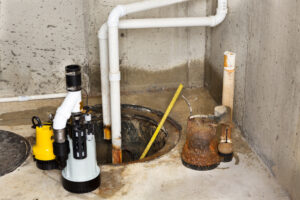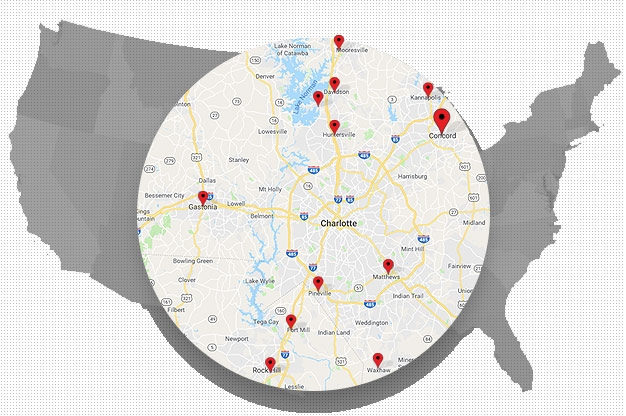8 Warning Signs You Need to Call a Sump Pump Repair Professional

When you buy a new home, the first thing on your mind probably isn’t water. Yet, around 60 percent of home basements have a moisture problem.
Depending on your location and the construction of your home, the problem usually stems from either condensation or seeping water from runoff or rainfall. One of the more common solutions to the wet basement problem is a sump pump.
While sump pumps are generally reliable mechanisms, they can develop problems like any other machine. Keep reading for eight warning signs that you need to call in a sump pump repair professional.
1. Visible Damage
It’s a good rule of thumb for you to check your sump pump a few times a year as a part of basic sump pump maintenance. Many areas see more rain in the spring and fall, so you could check on it in late winter and late summer.
Look for signs of visible damage. You can look for rusting on the pump mechanism itself. While rust isn’t necessarily a bad sign, it’s often a sign that the pump is reaching the end of its working life.
Most sump pump installations put the pump mechanism into a sump pit. Check the pit itself for signs of cracks.
2. Runs When Dry
The entire point of a sump pump is for it to pump actual water from inside your basement to outside of your home. In other words, it should only run when there is enough water in the sump pit to activate the pump.
Most pumps activate when the water level rises enough to move a float arm. It’s a bit like the way a toilet tank works, only in reverse. Instead of turning off the water flow when the float rises enough, it turns the pump on.
If your pump runs when the pit is dry, that’s a clear sign that there is a problem with the pump. It could be a mechanical problem or an electrical one.
3. Runs Constantly
Sump pump designs assume that the pump will run intermittently most of the time. The only time you should see anything like constant pumping is when there is a lot of rain saturating your property.
Otherwise, the sump pump should run a lot like your furnace or air conditioner. It kicks on for a while to do its job, then it kicks off.
If your sump pump runs constantly, it’s a bad thing. If nothing else, it puts a lot of strain on the pump.
The pump could burn out. If nothing else, though, it will reduce the lifespan of the pump.
4. Constant Cycling
A similar problem to running constantly is constant cycling. Cycling is when the pump turns from on to off or off to on. Again, like a furnace or AC unit, this kind of cycling should happen periodically.
When your pump cycles from off to on and back again constantly, it’s a problem. It could mean a lot of different things.
For example, it could mean that the float arm is stuck. It could mean an electrical problem triggers the cycling. It could also mean a problem with one of the mechanical components.
Given all the options, you’ll typically need a sump pump repair professional to track down the issue.
5. Infrequent Usage
You might think that infrequent usage will extend the life of your sump pump. Like most machines, keeping it in working condition often means that you must use it on at least a semi-regular basis.
Otherwise, any number of things could potentially go wrong with the internal workings of the pump. If you haven’t used your pump in a while and it doesn’t work properly, you’re probably looking at either a repair or a sump pump replacement.
6. Clogged Drain
One of the more common problems with sump pump performance is a simple clogged drain. There are a few things that can potentially clog your drain pipe.
One of the more common reasons is that mold or mildew builds up inside the drain. Dirt, leaves, or other natural debris falling into the drain pipe can also create a clog that slows the pump.
Depending on the clog source and location, you can sometimes clear the clog yourself. If you can’t, you’ll need some professional assistance to deal with the problem.
7. Strange Noises
If your pump starts making new, strange noises, that’s a very bad sign. It’s typically a signal that a part inside the pump has failed or will fail soon.
You’ll normally see this problem at the end of a pump’s working life. On average, you can expect about 10 years of service from a standard sump pump. That number goes down if you live in a damp area or your basement has more moisture than usual for your area.
8. Fails to Start
The most obvious sign that you need a sump pump repair is that the pump simply doesn’t start. Again, the problem could originate in the mechanical components or the electrical components.
Before you do anything else, though, you should check and make sure that the pump is getting power. If it’s on its own circuit, make sure the breaker didn’t trip.
If the breaker did trip, flip it back to the on position. If it immediately trips again, you likely have an electrical problem with the pump.
If the breaker didn’t trip, the pump might be dead or suffering from a serious mechanical issue that requires a pro to look at it.
Sump Pump Repair and You
Homeowners with damp basements rely on their sump pumps to keep things relatively dry. If your sump pump stops working, all of that extra moisture down there can turn into an issue fast.
That makes a prompt sump pump repair a fairly important step. Keep a particular eye out for constant cycling, running nonstop, failure to start, and running when dry. Otherwise, make sure you check your pump a few times each year for damage.
Sedona Waterproofing Solutions offer sump pump installation and replacement in the Concord, NC area. For more information, contact Sedona Waterproofing Solutions today.
Recent Posts
- How Crawl Space Encapsulation Benefits the Environment – An Expert Guide
- 6 Ways Professionals Keep Your Crawl Space in Top Shape
- Structural Repair Solutions for Crawl Spaces, Basements, and Foundations
- Essential Crawl Space Repair Tips Every Homeowner Should Know
- The Importance of Radon Mitigation: Ensuring a Safe Living Environment for Homeowners
Categories
- Basement Mold
- Basement Waterproof Foundation
- Basement Waterproofing
- Crawl Space Dehumidifier
- Crawl Space Encapsulation Cost
- Crawl Space Repair
- Crawl Space Waterproofing
- Encapsulation
- Foundation Repair
- Foundation Waterproofing
- French Drains
- Leaky Basement
- Mold Remediation
- Mold Removal
- Radon
- Slab Jacking
- Sump Pump
- Uncategorized
- Vapor Barrier
- Water Leak
- Waterproofing
- White Mold
Archives
- June 2024
- May 2024
- March 2024
- January 2024
- June 2023
- May 2023
- April 2023
- March 2023
- February 2023
- January 2023
- December 2022
- November 2022
- October 2022
- September 2022
- August 2022
- July 2022
- June 2022
- May 2022
- March 2022
- February 2022
- January 2022
- December 2021
- November 2021
- October 2021
- September 2021
- August 2021
- July 2021
- June 2021
- May 2021
- April 2021
- March 2021
- February 2021
- January 2021
- December 2020
- November 2020
- October 2020
- September 2020
- August 2020
- July 2020
- June 2020
- May 2020
- April 2020
- March 2020
- February 2020
- January 2020
- December 2019
- November 2019
- October 2019
- September 2019
- August 2019
- July 2019
- June 2019
- May 2019

